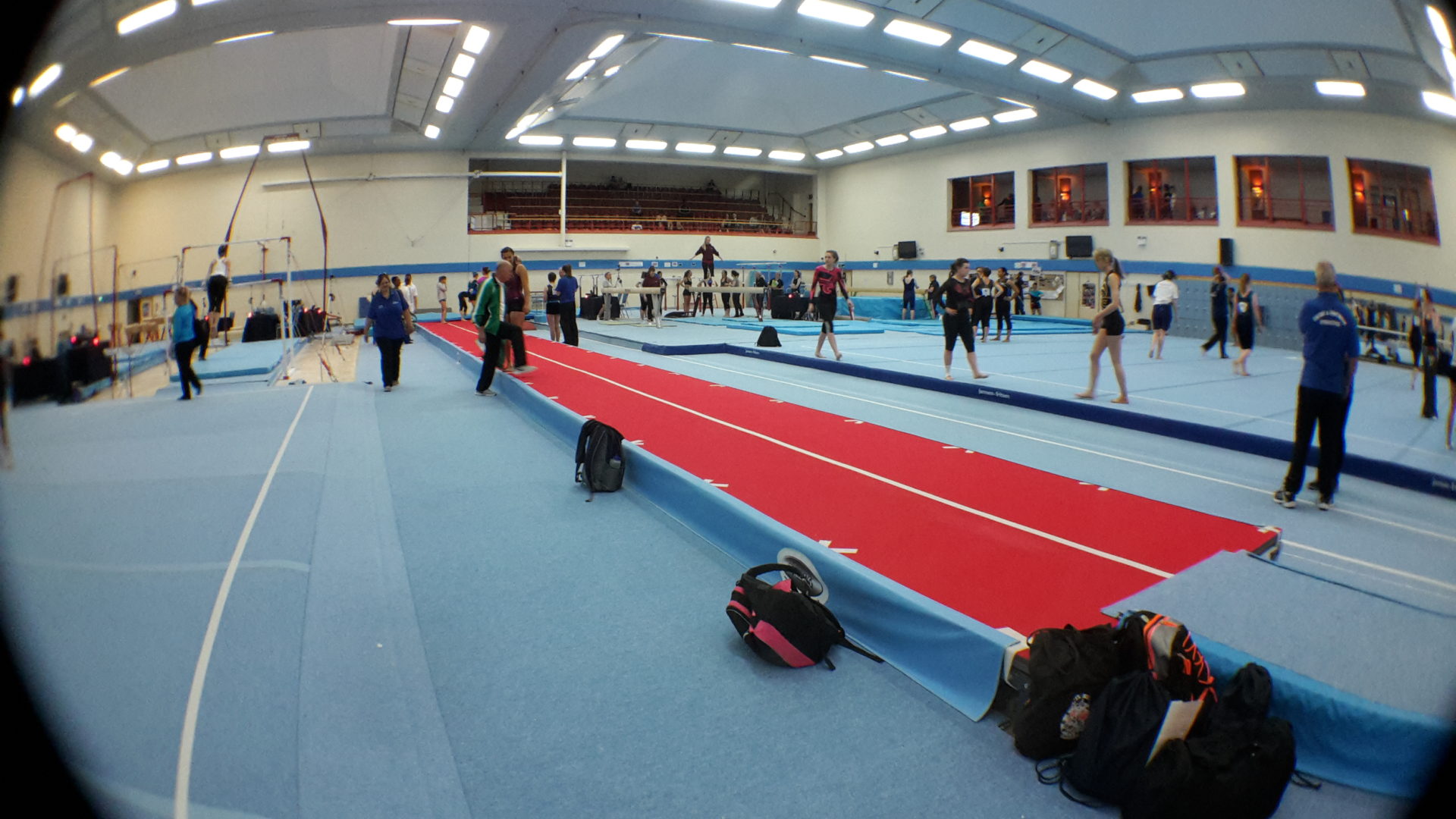Adult Gymnastics British Championships (British Vets) is an official ‘large’ gymnastics competition for Adults 18+ (level from beginners to advanced) held annually by British Gymnastics. It also allows entries from outside of the UK. The disciplines are Acrobatic Gymnastics, Men’s Artistic, Trampoline Gymnastics, Tumbling, and Women’s Artistic. Here are the main link, a link to the handbook, a link to the competition from 2016 (which has some pdf files with the rules of the comp). The competition is usually hel in August (the entries are accepted between mid-May and mid-June) in Lilleshall National Sports Centre.
I took part in the competition twice, in 2016 and 2017 in the Novice competitive level (I believe that an Introductory level (complete newbies) has been introduced since as well). It was an amazing experience! It was quite far from London where I was living at that moment; so it required staying the night before in a hotel in Telford (it’s actually possible to find accommodation in Lilleshall itself, but it was quite expensive), so it was like a whole little trip with the competition in the middle of it… And Lilleshall National Sports Centre is the place where the actual gymnasts hold their training from time to time… It’s quite a thing to do. The event can also be seen live at BG’s webpage, so if any of your friends/family fancy seeing you fall on your face you might as well indulge them 😀

The main difference to the club competitions (you can read about those here) is that you only compete all-around (again, I was doing Women Artistic Novice, some people combine it with doing trampoline and tumbling, and there are other disciplines, like acro), in WAG ladies need to do at least 3 events out of 4 (if you do 4, three highest count towards your score, so it actually gives you more chance if you try to do four), and I believe at least 4 out of 6 apparatus need to be competed in MAG).

So, where should I start… The event goes like this. You usually arrive early in the morning (which is why it makes sense to stay the night before somewhere nearby). Everyone needs to register and get their number, which you pin to your back for the judges to see. Officially, everyone needs to have a coach with them. I, personally, never had, you can always ask someone at the site to take care of you.
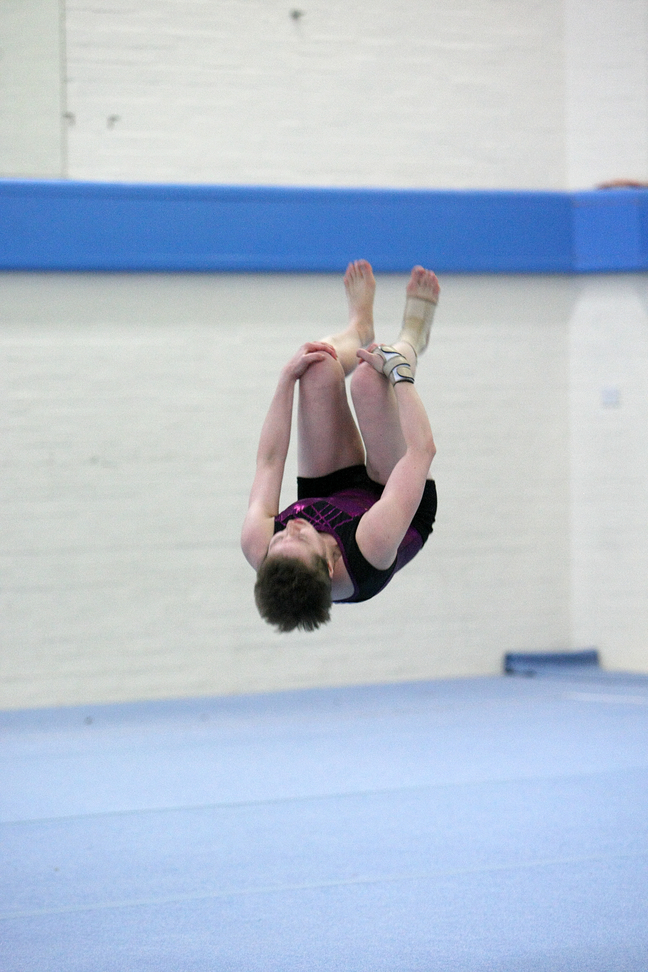
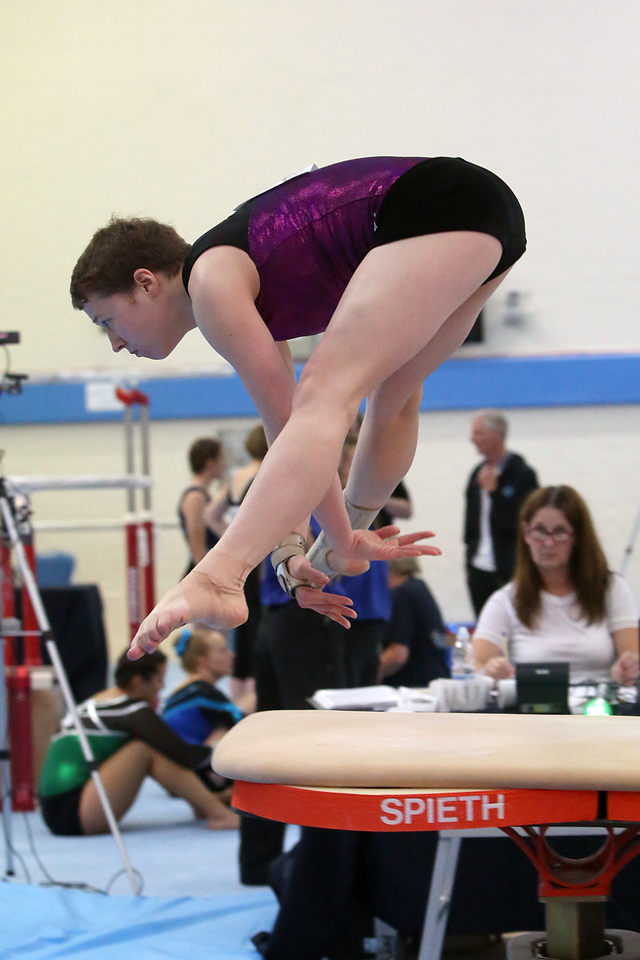
Then there is a rather long warm-up at the hall where the event is going to take place, it is about an hour-long I believe, so you can try the floor, beam, etc. Then everyone needs to move out and enter the hall in line; there’s an official ‘introduction’ of judges, national anthem, after which everyone moves to their first apparatus. When you’re doing the floor, you get properly introduced by name and your club, then your music will start. you have to recognise the judges before each routine by doing that graceful gymnastics rasing of your arm/arms 🙂 At other apparatuses, you just do your routines in more or less random order (within your group, of course, like Novice 30+). I know some ladies who were doing trampoline and tumbling along with WAG, so they had to run for a trampoline hall somewhere in between their routines.
You can actually watch your scores on-line, in a BG app. You also get them on pieces of paper from the judges. When everyone is finished there’s a long period of waiting, after which the results are announced, the winners get their medals, and everyone is free to go. In the second half of the day, there are acro and tumbling competitions. It’s time to buy a special T-shirt with all the names on its back and head home 😀 As I recall, the event is held for two days, with Novice doing the first and Advanced doing the second day (don’t remember the Intermediate group). Also, friends and family can buy tickets and observe the competition. There are usually some invited photographers taking pics, and you can order the photos on-line later 🙂
Now, a bit about the rules. Disclaimer: I’ve only done Novice WAG (contemplated trampoline and tumbling), and it’s been 3 years, so the rules (and my memory 🙂 ) might have changed.

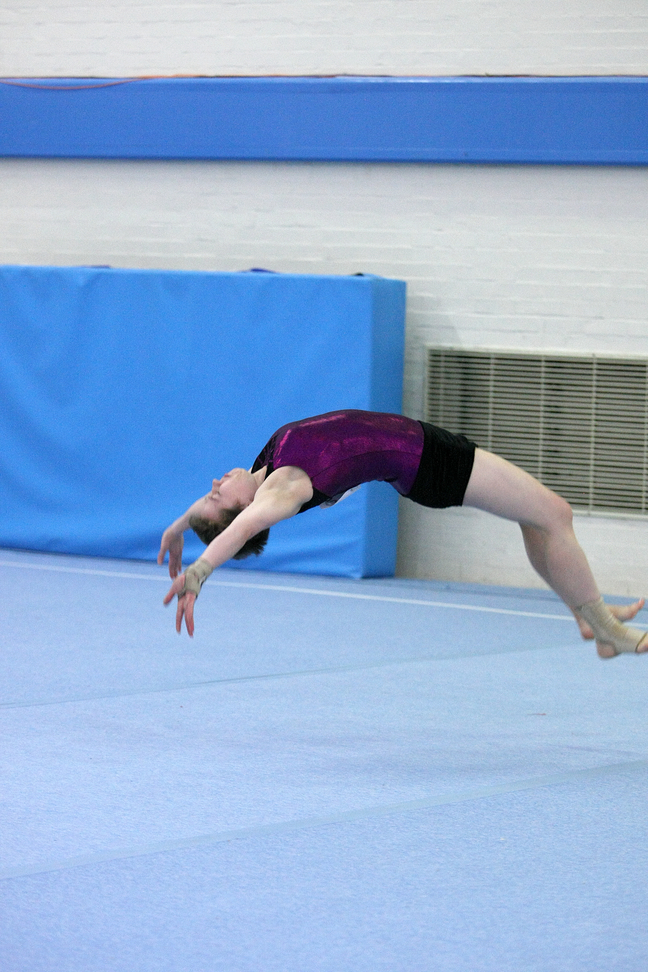
Point yout toes unlike me 🙂
Let’s look at it step by step. Some general things. Unlike the club competitions, judges here are quite strict. You get more deductions in general, so you would often get more points for an easy but flawless routine than if you try to perform the more difficult elements but stumble on them a bit. For example, these are some of the deductions:
- 0.1 Slight loss of form/bent legs poor posture in any particular move, poor posture in dance links
- 0.3 Bent legs/arms/not pointing toes, incorrect technique/”bendy” back, slight touch down of hands
- 0.5 Extreme bending of legs/arms/back, very bad technique
- 1.0 Fall
- 5.0 Short Exercise – 4 elements or less (be especially careful about this one!)
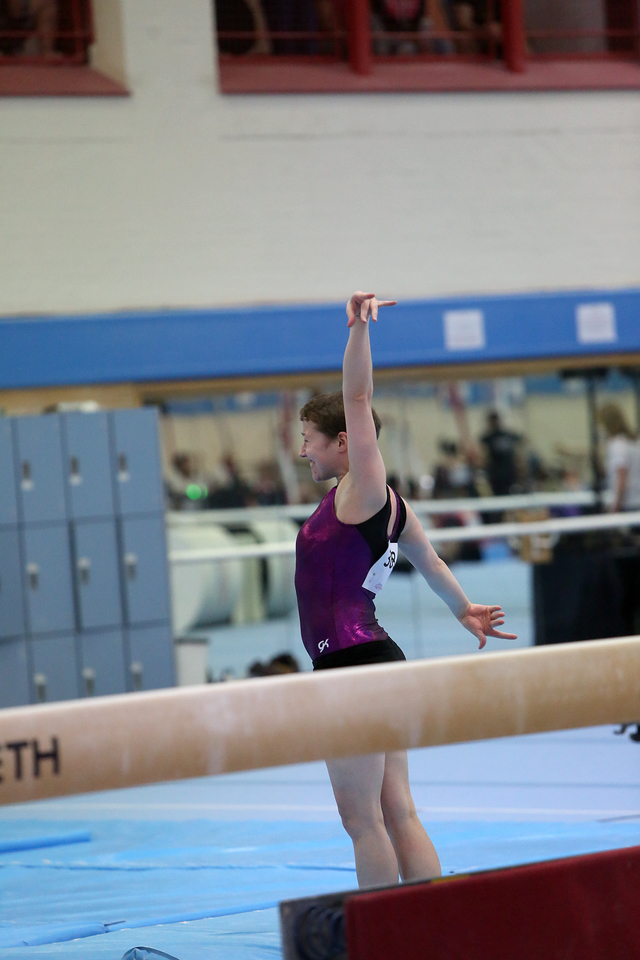
And now compare it to the ‘price’ of an element. It’s 0.1 for an uncoded element and just 0.3 for an A-element from the Code of Points. So, imagine going for a more difficult one and not pointing your toes there – you actually get less than for a perfect uncoded one!
Now, floor first. If you’re doing WAG, floor is done to music up to 90 sec long (I believe it can’t be too short also).
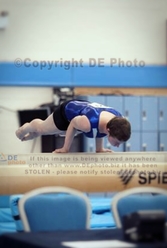
The total score is calculated as:
Total score = E score + D score + age bonus (+ artistry bonus for Women’s Artistic floor and beam only)
- E score = Execution marks which are deducted from the base score of 10.00
- D score = Difficulty Value (DV) + Compositional Requirement (CR) Values
- Artistry bonus = up to 0.5 bonus available on Women’s Artistic floor and beam only for artistry
- Women’s DV: Seven highest elements + dismount (except vault)
- CRs do not need to be included within the highest DV elements
- CRs: Five on each piece of apparatus (none on vault) @ 0.5 each
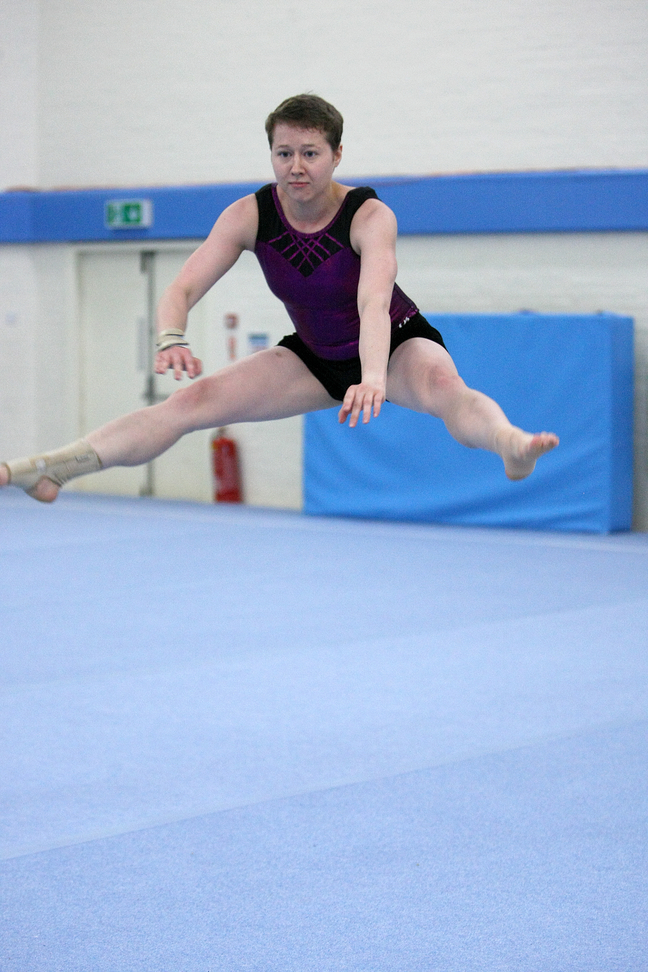
Let me try to explain this. Your total score comes as a sum of Execution and Difficulty. You get 10 initially for your E-score, then judges deduct points from it for those bent legs and not pointy toes.
D-score is a sum of the ‘price’ of 7 most ‘expensive’ elements + a dismount (that is a dismount for the beam and bars and just the 8th element for the floor I believe). For the ‘price’ you need to check the Code of Points. Elements that are not there (too simple 😀 ) are worth 0.1, A-elements cost 0.3, and B-elements are 0.5. As an example: say, in your floor routine, you do forward roll + tuck jump + split leap + handstand + split leap 1/2 turn + cartwheel + full turn on one leg + split + salto forward + bridge. The ‘prices’ are 0.1 + 0.1 + 0.3 + 0.1 + 0.5 + 0.1 +0.3 + 0.1 + 0.3 + 0.1. We take 7 highest : 0.5+0.3*3+0.1*3 = 1.7. Add the 8th element for a dismount (0.1) and you get 1.8.
Now we need to add CRs (competition requirements) to the D-score. For Novice floor those are:
- Leap series (two connected)
- Coded spin (a full turn is coded)
- Backward acrobatic element (even bwd roll will do)
- Forward/sideward acrobatic element (say, fwd roll)
- Dismount (must be an acrobatic element and not yet performed in the routine
Each of these in your routine adds 0.5 to D-score! Also on the floor you can get the ‘artistry’ bonus for:

- Confidence of performance = 0.1
- Expressiveness = 0.1
- The creativity of dance and transitions in and out of elements = 0.1
- Rhythm maintained throughout the routine (e.g. no long pauses between dance/moves or in the corners prior to tumbles) = 0.1
- Routine demonstrating movements in straight lines, curves, and with changes of direction and level = 0.1
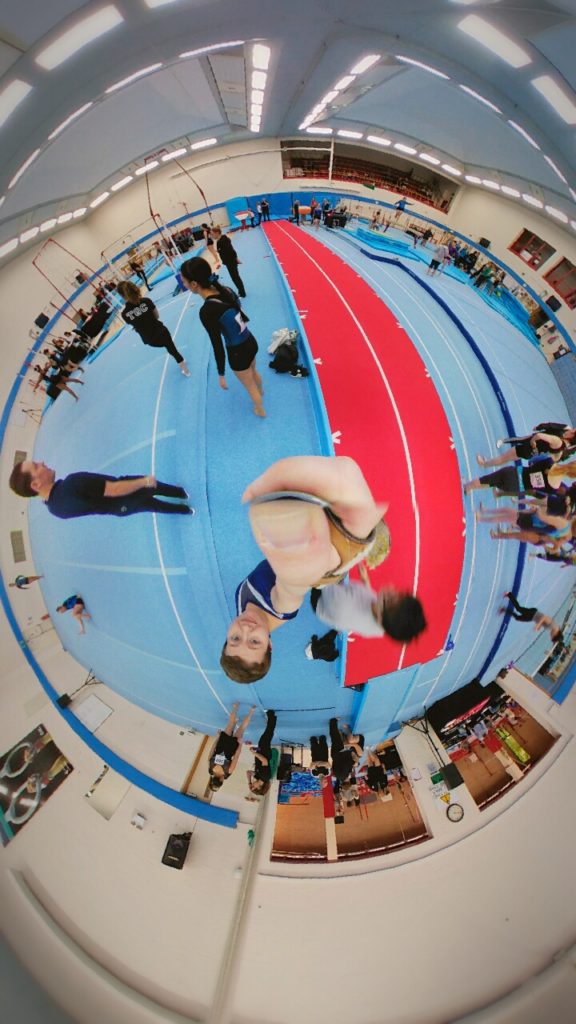

All of that added together gives you the total score. ‘Age bonus‘ is added only once, when all 3 scores are added. For each year above the base of your group (18+, 30+, 45+) you get 0.1 points. It is a huge advantage actually to be ‘older’. If you’re 44 you get an extra 1.4 points above someone of 30 years old. It does seem a bit too much sometimes 😆
The beam and bars scores are calculated in the same way, with the only difference in CRs. For the bars they are:
- Close bar element (hip circle)
- One bar change-please note: Squat On to Catch High Bar can be used to meet CR (which is what I did)
- Swing element
- Half turn (can be performed within routine, mount or dismount) I had it in a dismount
- Dismount
For the beam:
- Leap/jump series (two connected)
- Large leap/jump(ie. Split leap/jump, straddle jump)
- Spin (minimum half)–please note: Half Spin can be used to meet CR
- Acrobatic element (non-flight)
- Dismount
The only difference here is the vault. Each has a fixed ‘value’, and in Novice you can only choose:
- Feet on jump off vaults 2.0
- Through vault/straddle over 2.5 (that’s what I did 😀 )
- Handspring 3.0
The truth is it’s way easier than it sounds 🙂 I have learned beam/bars by myself (thank you YouTube 🙂 ) My club didn’t really do them so I went to some open sessions of another one and taught myself. I thought of my floor by myself, mostly trained it on a children playground next to my place :lol: But taking part in such an event is so satisfying. It’s like a little adventure where you can feel yourself a real gymnast 🙂 I would totally advise everyone to just try…

If you have more questions please ask in the comments below 🙂 This text is a bit of a mess…
